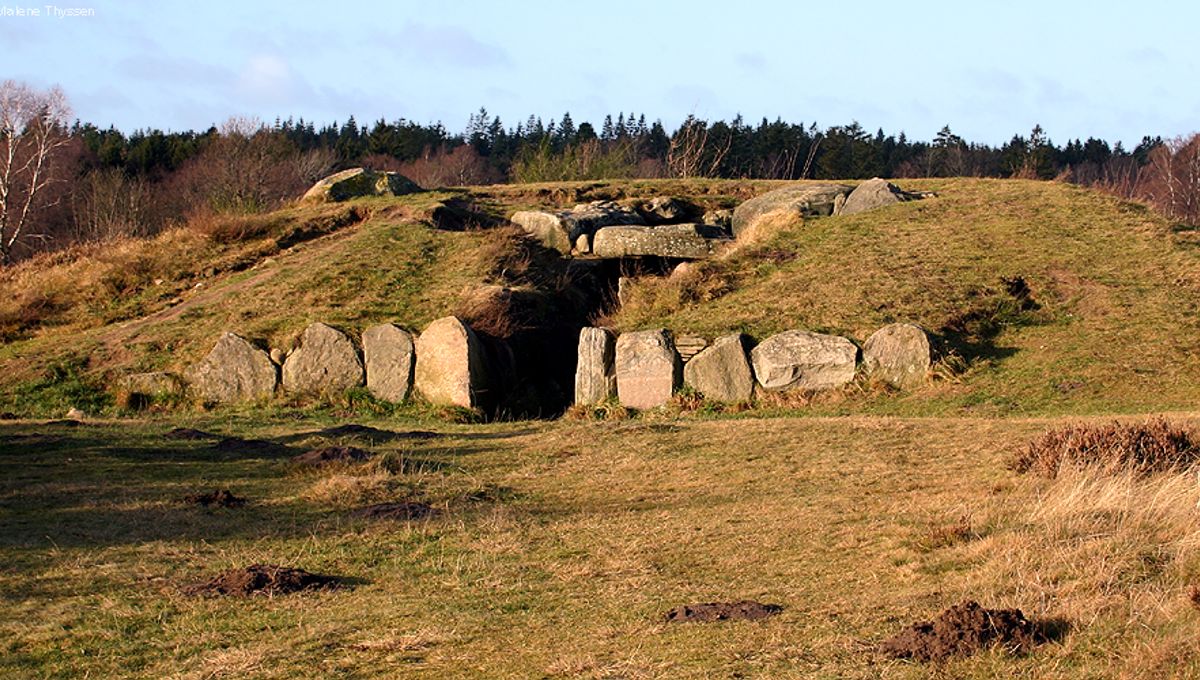
A 5,000-year-old Neolithic site has been unearthed on a Danish island that holds an unusual secret: a stone-paved cellar associated with the Beaker Culture.
The site, known as Nygårdsvej 3, is located near the Danish village of Eskilstrup on the island of Falster. It was discovered during the extension and electrification of a railway line that passed through a local farm.
The excavation revealed two phases of house construction that were built using designs common to the Funnel Beaker Culture. Named after the distinct funnel-shaped beakers they produced, these people were a significant Neolithic archaeological culture that existed in Northern Europe between around 4000 and 2800 BCE.
They were the first farming societies in the region and spread across much of what is now modern Denmark, northern Germany, southern Sweden, and parts of the Netherlands and Poland. With this change, people started to build the first houses in the region, along with megalithic tombs (dolmens), and other landscape-altering structures. This marked a drastic shift away from the hunter-gatherer lifestyle of the Late Mesolithic era.
The find is significant simply because it is an extremely rare find.
Marie Brinch
One such structure has been identified at Nygårdsvej 3 site. Among 141 postholes found at the site, several appear to form the wall and central posts of two houses built on the same spot in different phases. In total, 38 postholes were used for the first building and 35 for the second, suggesting that considerable planning went into its construction.
The buildings’ floors were made of compacted loam, which is made by mixing sand and clay. This type of flooring was being used elsewhere in the world at the time, but was pretty advanced for Scandinavia. But below this flooring was the most intriguing aspect of the site.
Archaeologists discovered a high number of pebbles that were deliberately placed as a sunken feature that resembled, so the researchers claim, a cellar. This may not sound like much to us today, but if this interpretation is correct, then this would represent a significant technological leap that would have helped preserve food.
“The find is significant simply because it is an extremely rare find”, Marie Brinch, an archaeologist with the Museum Lolland-Falster and lead author of a new study on the site, explained to IFLScience.
“In Denmark, as well as most of Northern Europe, Stone Age stone architecture is ‘limited to’ the megalithic structures. To my knowledge stone architecture connected to ordinary houses is almost unknown. The question is if this was a common feature in Stone Age houses or whether it is a question of good preservation at the site.”
In order to put forward the “cellar” interpretation, Brinch and colleagues had to eliminate alternatives. For instance, could the depression be a grave or dolmen that the house was built upon? The layout certainly resembled that of these types of structures, but the team ruled it out because they did not find any remains to support it.
The team also rejected the idea that the space was used for ritualistic practices based on other artifacts found at the site that could be interpreted as votive in nature. However, there was not enough material evidence to suggest this was the case.
As such, the researchers are still not completely sure what the space was used for.
“I don’t have an answer to that”, Brinch added, “but since we have been excavating many Neolithic houses and since the preservation at the site did not seem out of the ordinary, I am inclined to think that this was not a common feature – but only time will tell.”
According to radiocarbon dating results, the “cellar” and the first house were constructed between 3080 and 2780 BCE, while the second house was built around 2800 BCE.
In addition to the structures, the archaeologists recovered 1,216 artifacts, including flint tools, potter, fire-cracked flint, and burnt bone fragments. The team also found two fossilized sea urchins in the sunken space. It was the urchins that originally suggested the sunken floor may have been used for ritualistic purposes, but the team could not rule out whether they or any other artifact at the site was placed there deliberately or just accumulated at the space over time.
Nygårdsvej 3 offers some intriguing insights into the construction of Neolithic Denmark, even if it begs more questions than it answers. However, there are no plans to excavate at the site in the future.
“The excavation was a ‘rescue excavation’ (according to the Danish Museum Law) in relation to a large building project along the railway that runs through Falster,” Brinch explained. “The area had to be excavated because it was to be used for the building project, so even if we wanted to it is impossible to go back.”
Still, this does not mean continued research into what was recovered will not offer answers to the strange cellar-like space and the people who built it.
The study is published in Radiocarbon.
Source Link: Strange 5,000-Year-Old Underground Structure Discovered In Neolithic Dwelling In Denmark